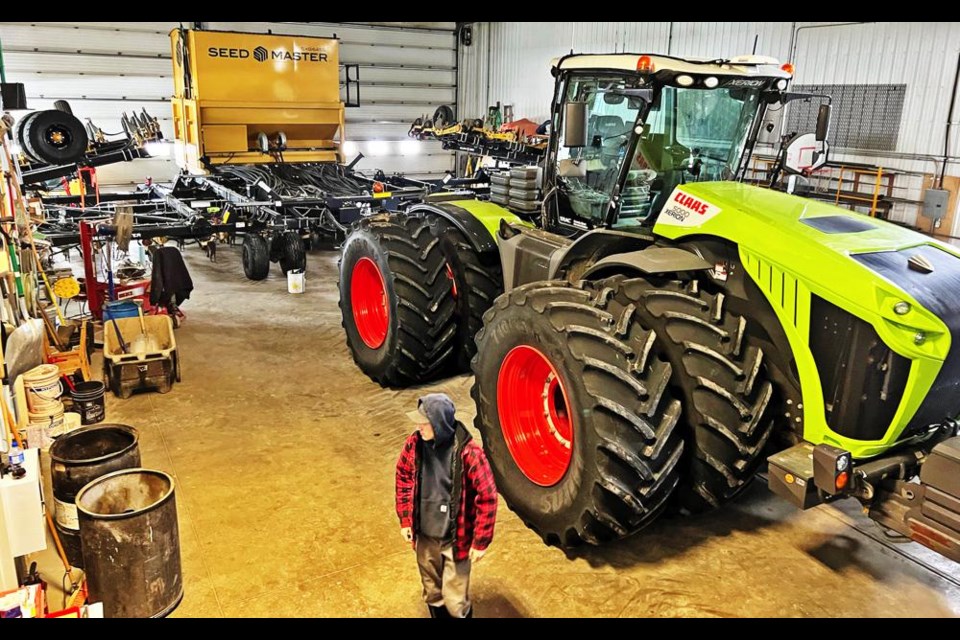CREELMAN – Farmers in southeast Saskatchewan have the potential for a great year in 2022, with recent moisture events and strong commodity prices, said Creelman-area producer Marcel Van Staveren.
While very little moisture came to his farm over the weekend, they did receive between three and five inches of snow in the previous storm, much of which was still lying on the ground this past weekend.
With seeding coming up in May, Van Staveren said he had some real concerns as he found in January while rock-picking, his top four feet of soil had little to no moisture in it. On the other hand, the farm has had very good snow cover since that time, and Van Staveren said he’s hopeful they will receive some more moisture in the next little while.
The low-lying areas seem to have lots of moisture right now, but he estimated about 30 to 40 per cent of his higher ground is still dry.
As the fields look right now, he said they will be able to start seeding by about May 5 or 6 with wheat or durum and lentils on their Griffin-area fields, and then they will progress to canola by around May 14-15 so it will emerge after the May long weekend.
As Van Staveren farms with his two brothers and sons, they will have four seeders out to begin with, two seeding durum and two with lentils, and if the timing works well, they will be finishing those crops just in time to do the canola seeding in mid-May, he said.
“The commodity prices are really strong, and the opportunity to be profitable this year is really exciting if we can grow the darn stuff,” he said, noting that the prices won’t change their set rotation of crops, which help prevent crop diseases and weed growth with the change in crop types.
“With best management practices, most people will follow that. We will carry on with durum wheat, red lentils and canola, and typically we’ll start with spring wheat or durum first, and lentils as soon as we are able,” he explained.
There hasn’t been much price volatility with commodities, but prices have been increasing steadily, with many commodity prices about double of where they were a year ago.
Offsetting that, crop input prices have also been going up, with some products double or triple of where they were a year ago, he said.
As part of risk management, he noted a number of farmers stocked up last fall on fertilizer and diesel, which is good considering the rising prices. He said for example, a year ago they paid 40 cents a pound for nitrogen, and now it’s $1.20 a pound. Glyphosate and diesel are also up significantly, he added.
“The biggest concern for most of us is the amount of water in our soil. That has been improving every week, so it’s very exciting for 2022, that’s great for Saskatchewan, and great for Weyburn,” said Van Staveren.
“The pressure is on to perform this year, so we can comfortably perform in 2023,” he added, noting the prime determining factor will be the level of moisture in the fields.
“You can buy all the inputs you want, but water is something we can’t create in dryland Saskatchewan. It’s improved a lot, and we had a good snow cover. It’s been several years since we’ve had significant moisture event as we had a couple of weeks ago, so it’s an exciting time for most growing operations,” said Van Staveren.
The one insect he is watching anxiously for this coming season will be grasshoppers, as they have been growing in numbers the last couple of years, and he is worried about what numbers they will see this year.
The good news is the crop insurance coverage for this year is quite strong, which should help to mitigate grasshopper pressure, or cover farmers in the event of another dry summer.
“The risk is higher than ever, but the rewards might be higher than ever also,” said Van Staveren.




